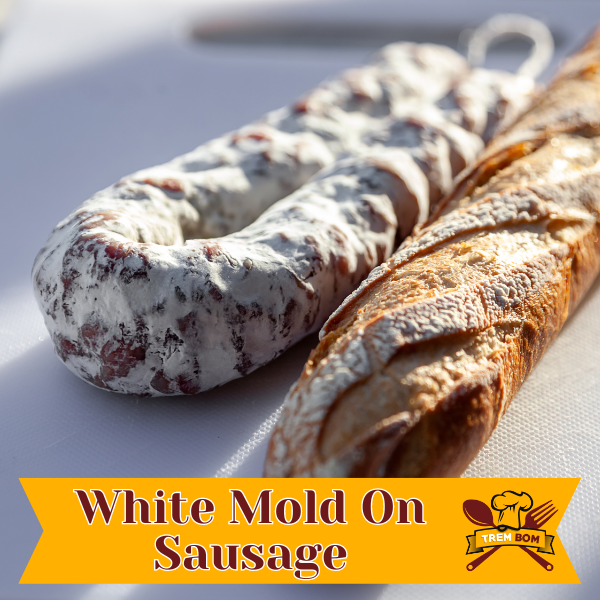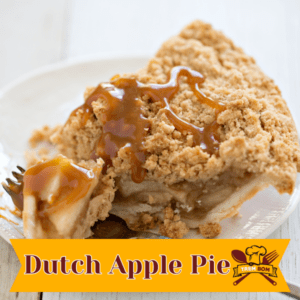
Did you know that a significant number of homemade sausage enthusiasts encounter white mold, a type of fungi with spores, at some point in their curing adventures? It’s a common sight, but often misunderstood. We’re diving straight into the heart of this topic to shed light on what white mold on sausage really means for your charcuterie projects, including the foods and spices stuffed inside.
Whether it’s a sign of artisanal success with foods and spices or an alarm bell for food safety can be quite perplexing. In our journey together, we’ll demystify the fuzzy exterior that might hug your beloved links and arm you with knowledge to confidently tackle—or embrace—this culinary conundrum. Let’s get down to the meaty details without any fluff.
Key Takeaways
- Recognize that white mold on sausage is often a beneficial component in the curing process, contributing to flavor and safety by outcompeting harmful bacteria.
- Distinguish between good and bad molds by understanding their appearance and texture; good mold is typically white and powdery, whereas harmful mold may be green, black, or slimy.
- Implement proper storage and handling techniques, such as maintaining the right humidity and temperature, to manage mold growth on sausages effectively.
- If unwanted mold appears, remove it promptly using a vinegar solution or by peeling the casing, ensuring that the sausage remains safe for consumption.
- Appreciate the significance of natural molds in traditional sausage-making, but also consider using cultivated molds for more consistent and controlled results.
- Monitor and address mold growth over time to ensure the quality and safety of your cured sausages, adapting your approach as needed based on environmental conditions and mold behavior.
Understanding White Mold
Mold Identification
When we spot white mold on sausage, it’s crucial to identify whether it’s safe. We look for a powdery or fuzzy texture. If the white mold covers the sausage evenly throughout the room during the process, this is often a good sign. It suggests maturity without spoilage.
We also notice color changes over time. A young mold starts off white and can develop into blue-green shades as it ages. These shifts in hue, including the appearance of white spots or green mold, help us gauge whether the sausage is still fine to enjoy.
Good vs Bad Mold
In our experience with cured meats, not all molds, like white spots, are enemies. Some white molds are beneficial and even sought after for flavor development. For example, white penicillin mold is a friend in charcuterie circles.
Here’s what we keep an eye out for:
- Uniform coverage of white or cream-colored mold.
- Lack of dark spots or slimy textures.
Conversely, we stay away from sausages with greenish-black, orange patches, or white spots—these signal harmful spoilage.
Mold Types
We’ve learned that certain molds like Penicillium nalgiovense, which cause white spots, are used intentionally in curing processes because they protect against bad bacteria and add depth to flavor profiles.
The types of molds we want on our charcuterie include white spots.
- Penicillium: The hero behind many savory aged meats.
- Aspergillus: Sometimes found but requires caution due to potential toxins.
However, some molds, like those with white spots, spell trouble and should be avoided at all costs.
- Mucor: Often appears as fast-growing black dots.
- Cladosporium: Can cause respiratory issues if ingested or inhaled.
The Role of White Mold
Meat Curing Process
Curing meat is an art. We select quality cuts and prepare them with care. Salt, sugar, and spices are rubbed onto the meat to start curing. This process can take from a few days to several weeks.
White mold plays its part here. It forms on sausages during the later stages of curing, especially when we hang them in a controlled environment. Optimal temperature and humidity are crucial for this step. Usually, it takes about two weeks before we see the first signs of good mold growth on our sausages.
Sensory Impact
We’ve noticed that white mold alters taste significantly. A subtle earthy flavor develops alongside traditional spice notes due to the mold’s presence.
Texture also changes as mold grows on sausage casings; it becomes firmer yet retains moisture inside better than ever before! These sensory modifications contribute greatly to overall quality improvement in cured meats like salami or chorizo.
Mold Development
Over time, observing how white mold envelops sausage casings is fascinating for us food enthusiasts! It starts out spotty but eventually covers most surfaces if conditions are right—cool temperatures around 55°F (13°C) with high relative humidity near 85-90%.
Beneficial species like Penicillium nalgiovense go through life cycles where they consume available sugars and produce enzymes that help preserve our delicious creations even longer!
Identifying Acceptable Molds
Safety Assessment
We know that not all molds are bad news. But how do we tell the safe ones from those that spell trouble? Let’s dive in. The first step is a visual inspection. If you spot mold on your sausage, check its color and texture. A fine layer of white or light gray mold often indicates good fermentation.
Now, if the mold has shades of green, black, or pink, it’s time to be cautious. These colors can signal harmful molds that might make us sick. We must consider our health before deciding to eat molded sausages.
It’s also smart to think about any unusual smells coming from the sausage. If something smells off or particularly strong, it could mean dangerous bacteria have joined the party.
White Spots Analysis
Have you ever noticed white spots on your sausage and wondered what they were? Those spots usually mean there’s some mold growth happening. But don’t panic just yet! Many traditional sausages actually need this kind of mold for flavor development.
Let’s get up close with these white spots—literally! Check their texture; harmless molds tend to look like a dusting of flour and feel a bit fuzzy when touched gently with clean hands.
If those spots are more like hard lumps or they’re spread unevenly, we should take a second look before taking a bite.
Remember: Mold distribution matters too! Good molds grow evenly across the surface because they’ve been invited properly during processing.
Managing Mold on Sausage
Mold Growth Factors
Mold loves moisture and warmth, two things that can make sausages a perfect host. We’ve learned that keeping humidity levels in check is crucial. Too much moisture, and you invite unwanted fuzzy guests. But with too little, your sausage dries out, losing flavor.
Controlling temperature is just as important. A stable cool environment slows down mold growth significantly. This balance prevents harmful molds from spoiling our hard work.
We also focus on using high-quality ingredients for our sausages. Better quality means fewer chances of undesirable mold appearing during the curing process.
- Key factors to watch:
- Humidity levels
- Temperature consistency
- Ingredient quality
Environmental Control
Now let’s talk about mastering the climate of our curing space. We use tools like hygrometers to keep an eye on humidity and thermometers for temperature tracking. It’s all about creating an ideal setting where good molds thrive while bad ones don’t stand a chance.
Air circulation cannot be overlooked either—it’s a game-changer in combating unwanted molds on sausages. By ensuring there’s enough airflow, we help maintain an even environment which discourages the growth of harmful molds.
To sum up, here are steps we take to control our environment:
- Monitor humidity with hygrometers.
- Keep temperatures consistent using thermometers.
- Maintain air circulation with fans or ventilation systems.
Removing Unwanted Mold
Cleaning Methods
When tackling white mold on sausage, cleanliness is crucial. We’ve found effective ways to keep our equipment and storage areas spotless. It starts with choosing the right cleaning agents. We opt for solutions that are tough on germs but gentle on food products. For example, a mixture of water and vinegar can work wonders without leaving harmful residues.
Regular cleaning schedules are a must for us. This means wiping down surfaces daily and doing a thorough cleanse weekly. By sticking to this routine, we ensure that our curing space remains hygienic.
Prevention Tips
Preventing unwanted mold begins long before it appears. During handling, we always wear gloves to avoid contamination from our hands. In storage, proper air circulation is key; it keeps humidity in check which discourages bad molds from growing.
We also make sure to observe our sausages regularly for any early signs of trouble – catching an issue early makes all the difference.
The Significance of Good Mold
Flavor Enhancement
We’ve learned that not all molds are foes to our food. In fact, certain white molds work wonders on sausage, enriching its taste significantly. White mold is like a skilled chef; it knows just how to season the meat to perfection. Historically, this isn’t new knowledge—our ancestors used mold for flavor long before us.
Take a bite of quality cured sausage and you might detect complex flavors. That’s often the white mold at play. It breaks down proteins and fats, releasing savory notes you can’t get from seasoning alone.
Preservation Benefits
Beyond taste, we appreciate white mold for keeping sausages safe longer. This friendly fungus forms a protective layer against harmful bacteria. It’s fascinating how nature provides such elegant solutions!
The role of good molds in food preservation is clear when we consider their ability to ward off pathogens. By acting as natural preservatives during curing processes, they extend shelf life without chemicals.
Natural vs Cultivated Molds
Comparison
We’ve seen how good mold is significant in sausage making. Now, let’s compare it with other methods. Unlike vacuum sealing or refrigeration, which simply keep food from spoiling, white mold on sausage plays a proactive role. It adds distinct flavors and textures that can’t be achieved by cold storage.
Mold isn’t just for meats either. Think about blue cheese or the rinds of some soft cheeses; these are edible molds too. Each type brings its own taste and health benefits to the table. When we look at cost-effectiveness, using natural molds like those found on sausages often wins out over artificial preservatives, not only for their complex flavors but also because they can be more wallet-friendly in artisanal settings.
White mold is part of traditional curing processes that have been refined over centuries. The health benefits are clear: natural molds help break down fats and proteins, which makes the meat easier to digest.
Choosing Molds
So how do you choose the right mold? If you’re diving into home-curing adventures, selecting appropriate starter cultures is crucial for both flavor and safety reasons.
Let’s weigh our options: allowing natural airborne molds can certainly feel more authentic—and sometimes it works perfectly—but it’s a gamble as unwanted bacteria could join in too. On the flip side, inoculating your sausage with selected strains gives you control over consistency and safety. Here’s what we suggest:
- Consider your environment before letting nature take its course; if there’s good airflow where you cure your meats and no signs of harmful fungi around, trying out natural molds might work.
- For consistent results especially when starting out or if conditions aren’t ideal—opt for high-quality commercial cultures designed specifically for meat curing.
When sourcing cultures:
- Look for reputable suppliers known among artisanal curers.
- Read reviews from others who’ve used their products successfully in similar projects.
The pros of selected strains include predictable flavors and lower risk of spoilage while cons may involve higher initial costs compared to just letting nature do its thing—which could still yield excellent results under the right circumstances!
Dealing with Mold Over Time
Observation Techniques
In our journey of sausage making, we’ve learned that keen observation is key. We teach ourselves to recognize the subtle changes in our sausages. It starts with visual inspection skills. We look for white mold—this is generally a good sign.
We also keep a logbook. Every detail matters: temperature shifts, humidity levels, and even slight color changes in the mold on our sausage get noted down.
Periodic tactile assessments are crucial too. We gently feel the surface of our sausages to check for unwanted textures indicating bad molds.
Long-term Management
We plan strategies for keeping conditions ideal over time. Good molds thrive in stable environments; we aim to maintain these as much as possible.
When bad molds appear, we tackle them head-on with proven solutions. Our goal is always clear: preserve the quality of our sausage without compromise.
As seasons change, so do our preservation techniques. Adapting is part of this adventure—we learn and grow with every batch we cure.
Conclusion
Final Remarks
We’ve sliced through the topic like a sharp knife through aged salami, uncovering the ins and outs of white mold on sausage. It’s clear that this fuzzy coat isn’t just a random occurrence—it’s a sign of flavor development and safety, a rite of passage for quality cured meats. We’ve learned how to spot the good mold from the bad, ensuring our charcuterie board is both delicious and safe. As we manage and embrace the molds that nature throws our way, we’re reminded that not all molds are villains; some are unsung heroes in the world of gastronomy.
Let’s keep our eyes peeled for that beneficial bloom and our palates ready for adventure. Next time you spot white mold on your sausage, remember what we’ve shared and savor the taste of tradition. Got a story or a tip about dealing with molds? Share it with us! Together, let’s continue to craft and enjoy top-notch cured meats.
Frequently Asked Questions
What is white mold on sausage?
White mold on sausage is a beneficial fungus that helps in curing and flavor development. It’s typically safe to eat.
Is all white mold on sausage acceptable?
Yes, if it’s intentional and resembles a powdery coating. However, be cautious of any unfamiliar molds or color changes.
How can I manage mold growth on my homemade sausages?
Keep them in a controlled environment with proper humidity and temperature, ensuring good air circulation around the sausages.
Can I remove unwanted mold from my sausage safely?
In many cases, yes. Gently wipe off the surface using a cloth dipped in vinegar or wine.
Why is some mold considered ‘good’ for sausages?
Good molds prevent harmful bacteria growth and contribute to the unique flavors of cured sausages.
What’s the difference between natural and cultivated molds on sausages?
Natural molds occur spontaneously during curing while cultivated ones are intentionally added for consistency and safety.
Over time, how should I deal with mold on stored sausage?
Monitor your stored sausage regularly; manage humidity levels; remove any undesirable molds promptly to maintain quality.






